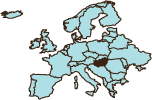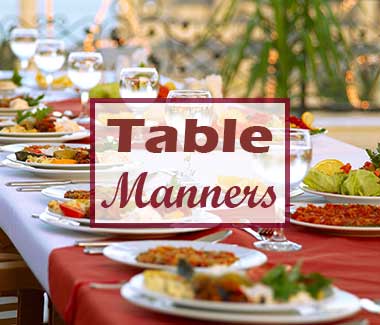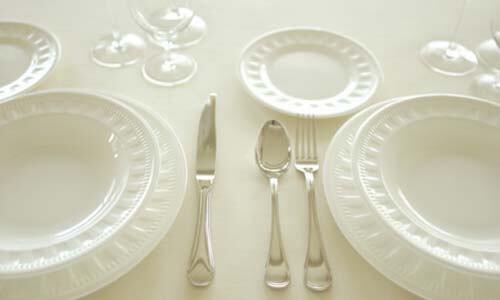Hungarian Dining Etiquette
Dining etiquette for drinking. The more you drink, the more you will be offered. If you don't want to drink anymore, leave your glass more than half full.
Dining etiquette for toasting. The most common toast is kedves egeszsegere (to your health). Never break eye contact while making a toast, from the moment the glass leaves the table until you place it back down. There can be many toasts throughout a meal; you will be expected to make one in a small group at some point, especially if you have been toasted personally or are the guest of honor.
table manners
Dining etiquette for beginning to eat. Start to eat only when the host invites you to and everyone has received food on their plates.
Dining etiquette for utensils. The knife remains in the right hand, and the fork remains in the left. When the meal is finished, place your fork and knife together so that they are parallel in the middle of the plate. If you're unsure of which utensil to use, always start from the outside and work your way in, course by course. The fork and spoon above your plate are usually for dessert.
Dining etiquette for eating bread. Bread is usually served without butter, and there is usually no bread plate.
Dining etiquette for resting your hands. Your hands are expected to be visible above the table. Rest your wrists on top of the table.
Dining etiquette for passing food. Pass all dishes at the table to your left.
Dining etiquette for eating gravy. If there is gravy or sauce, you cannot use your bread to soak some of it up, except in family-style restaurants or less for¬mal dinner parties at home.
Dining etiquette for seating. The most honored position is at the head of the table, with the most important guest seated immediately to the right of the host. If there is a hosting couple, one will be seated at each side of the table. Men typically must rise when women enter the room, and may or may not enter a room first when a woman is present. At the table, the oldest woman or most honored guest is served first.
Dining etiquette for restaurants. In informal restaurants, you may be required to share a table: if so, do not force conversation; act as if you are seated at a private table. Waitstaff may be summoned by making eye contact and saying "kerem".
Dining etiquette for talking business. The business lunch or dinner, depending upon how well developed your relationship is with your Hungarian colleagues, is generally not the time to make business decisions. Take your cue from your Hungarian associates.
Dining etiquette for the home. Allow the more senior members of your party to enter rooms ahead of you. At the table, do not presume to seat yourself, as the seating arrangement is usually predetermined. You might have to remove your shoes before entering a home.
Dining etiquette for paying the bill. Usually the one who does the inviting pays the bill. Sometimes other circumstances determine the payee (such as rank).
Dining etiquette for tipping. A 10 percent tip is usually sufficient for restaurants; more is considered nouveau and gauche. Restaurants may not have the 10 percent tip already included on the bill, so be sure to ask. Even if it is included, it is still appropriate to leave some odd change, bringing the total tip to about 15 percent. Include the tip when you pay the bill at the cashier: do not leave either the bill payment or the tip on the table (the bill is usually made out and left on the table when you order). You might have Gypsy musicians come and play at your table: you will be expected to tip them something: give it to the leader of the group as you or they leave.




